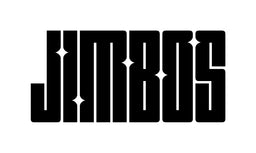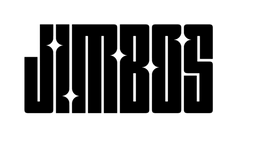How to Detail an RV Using Minimal Water (Eco-Friendly Method)
If you live in a drought-restricted area or simply want to reduce waste, you can still keep your RV spotless without using gallons of water. Modern waterless and rinseless detailing products make it easy to safely wash, clean, and protect your rig anywhere — even at campgrounds or storage facilities with no hose access.
Estimated Reading Time: ~13 minutes
Why Go Water-Smart with Your RV Detailing?
Traditional RV washing can use more than 100 gallons of water per wash. Waterless and rinseless methods cut that down by 90–95 percent while still removing dirt safely. They also reduce run-off that can carry chemicals into storm drains or soil, making this approach eco-friendly and travel-friendly.
Waterless vs Rinseless RV Washing
- Waterless Wash: Spray-on solution that encapsulates dirt so you can wipe it off safely with microfiber towels. Ideal for light dust and weekly maintenance.
- Rinseless Wash: Uses a bucket with a few gallons of diluted soap solution (like The Super Soaper) to wash larger areas without a hose. Perfect for moderate grime or when water is limited.
What You’ll Need
- The Super Soaper
- Orange Wash Microfiber Towels
- Tough As Shell Ceramic Spray
- Spray bottle or pump sprayer
- Two buckets (for rinseless washing method)
Step-by-Step Eco-Friendly RV Detailing Method
Step 1: Pre-Treat with The Super Soaper
Mix 2 ounces of The Super Soaper with 1 gallon of water in a pump sprayer. Mist each panel to loosen dirt and road film before contact washing. This reduces scratches and the need for heavy rinsing.
Save Water Without Sacrificing Clean Power
The Super Soaper produces rich foam that lifts grime and reduces the need for rinsing — perfect for eco-friendly RV washes.
Shop The Super Soaper Buy on AmazonStep 2: Wipe with Microfiber Towels
Fold each towel into quarters to use a clean section for every panel. Gently wipe in straight lines — never circular motions — to avoid swirls. Replace or rinse towels as they pick up dirt.
Step 3: Rinseless Wash Option
For heavier grime, fill a bucket with 2–3 gallons of water and 1–2 ounces of The Super Soaper. Dip your microfiber towel or mitt and wash one section at a time, then dry immediately with a clean towel.
Step 4: Apply Ceramic Protection
Once the RV is completely clean and dry, apply Tough As Shell Ceramic Spray. This creates a hydrophobic layer that repels dust and dirt, making future waterless cleans even easier and reducing how often you need to wash.
Protect Your RV After Every Eco Wash
Tough As Shell Ceramic Spray locks in shine and protection for months — even with minimal water use.
Shop Tough As Shell Buy on AmazonStep 5: Finish Touches
Clean windows and mirrors with a damp microfiber and a small amount of The Super Soaper. Use a dry section to buff clear. If desired, dress tires and trim with All Dressed Up for a UV-protected, OEM matte finish.
Water Usage Comparison
| Method | Water Used per Wash | Time Required | Best For |
|---|---|---|---|
| Traditional Hose Wash | 80–120 gallons | 90 minutes + | Heavy mud and salt buildup |
| Rinseless Wash | 2–3 gallons | 60 minutes | Moderate grime |
| Waterless Wash | <1 gallon | 40 minutes | Light dust and maintenance |
Pro Tips for Eco-Friendly RV Detailing
- → Avoid washing in direct sun to prevent streaks and evaporation spots.
- → Use multiple microfiber towels — one for paint, one for windows, one for trim.
- → Apply ceramic protection every 3–6 months to make future cleans faster.
- → Keep a waterless wash bottle on hand for on-the-road touch-ups.
- → Dispose of wastewater responsibly away from storm drains.
Related Reading
- How to Foam Wash an RV Using The Super Soaper
- How to Wash an RV Without Leaving Water Spots
- How to Apply Tough As Shell Ceramic Spray to an RV Exterior
- RV Spring Cleaning: How to Bring It Back to Life After Storage
- The Best Eco-Friendly RV Detailing Products You Can Use Anywhere
FAQs
Is a waterless wash safe for large RVs?
Yes — as long as the surface is not heavily soiled. Pre-treat with The Super Soaper to encapsulate dirt and wipe gently with microfiber towels.
How much water does a rinseless RV wash use?
Only 2–3 gallons for an entire RV, compared to 100+ for a traditional wash.
Can I apply ceramic spray after a waterless wash?
Absolutely. Once dry, apply Tough As Shell Ceramic Spray for a slick, protected finish that repels dust and dirt.
Does rinseless washing scratch paint?
Not if done properly with clean, high-quality microfiber towels and adequate lubrication from the soap solution.
When should I avoid a waterless wash?
Avoid it after muddy or salty road trips — rinse first to remove large particles that could scratch the surface.



